
A mousse is a soft prepared food that incorporates air bubbles to give it a light and airy texture. Depending on preparation techniques, it can range from light and fluffy to creamy and thick. A mousse may be sweet or savoury.

Neapolitan ice cream, also sometimes referred to as Harlequin ice cream, is an ice cream composed of three separate flavors arranged side by side in the same container, usually without any barrier between them.
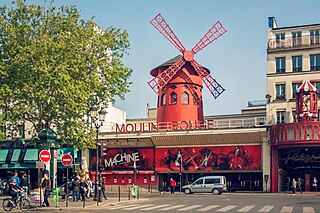
Moulin Rouge is a cabaret in Paris, on Boulevard de Clichy, at Place Blanche, the intersection of, and terminus of Rue Blanche.
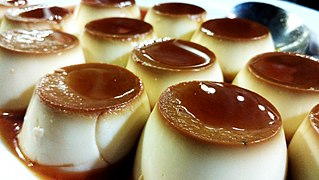
Crème caramel, flan, caramel pudding, condensed milk pudding or caramel custard is a custard dessert with a layer of clear caramel sauce.

Joël Robuchon was a French chef and restaurateur. He was named "Chef of the Century" by the guide Gault Millau in 1989, and awarded the Meilleur Ouvrier de France in cuisine in 1976. He published several cookbooks, two of which have been translated into English, chaired the committee for the Larousse Gastronomique, and hosted culinary television shows in France. He operated more than a dozen restaurants across Bangkok, Bordeaux, Hong Kong, Las Vegas, London, Macau, Madrid, Monaco, Montreal, Paris, Shanghai, Singapore, Taipei, Tokyo, and New York City. His restaurants have been acclaimed, and in 2016 he held 31 Michelin Guide stars among them, the most any restaurateur has ever held. He is considered to be one of the greatest chefs of all time.

The Avenue de l'Opéra was created from 1864 to 1879 as part of Haussmann's renovation of Paris. It is situated in the center of the city, running northwest from the Louvre to the Palais Garnier, the primary opera house of Paris.
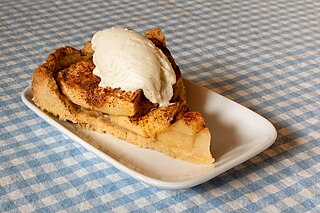
Apple cakes are cakes in which apples feature as a main flavour and ingredient. Such cakes incorporate apples in a variety of forms, including diced, pureed, or stewed, and can include common additions like raisins, nuts, and 'sweet' spices such as cinnamon or nutmeg. They are a common and popular dessert worldwide, thanks to millennia of apple cultivation in Asia and Europe, and their widespread introduction and propagation throughout the Americas during the Columbian Exchange and colonisation. As a result, apple desserts, including cakes, have a huge number of variations.

A Swiss roll, jelly roll, roll cake, cream roll, roulade or Swiss log or swiss cake —is a type of rolled sponge cake filled with whipped cream, jam, icing, or any type of filling. The origins of the term are unclear; in spite of the name "Swiss roll", the cake is believed to have originated elsewhere in Central Europe, possibly Austria or Slovenia. It appears to have been invented in the nineteenth century, along with Battenberg cake, doughnuts, and Victoria sponge. In the U.S., commercial snack-sized versions of the cake are sold with the brand names Ho Hos, Yodels, Swiss Cake Rolls, and others. A type of roll cake called Yule log is traditionally served at Christmas.
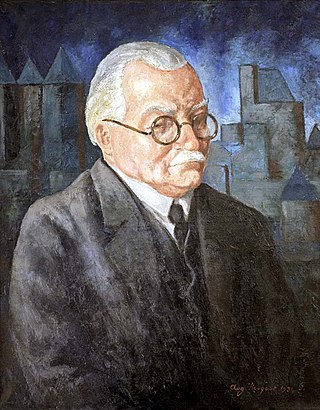
Prosper Montagné was one of the most renowned French chefs of the Belle Époque and author of many books and articles on food, cooking, and gastronomy, notably Larousse Gastronomique (1938), an encyclopedic dictionary of the French culinary arts. While Montagné was once as famous as his friend Auguste Escoffier, and was one of the most influential French chefs of the early twentieth century, his fame has faded somewhat. In the 1920s, Montagné, Escoffier, and Philéas Gilbert—their close friend and collaborator, and an acclaimed chef and writer in his own right—were the French chefs and culinary writers esteemed above others by many French journalists and writers. After Montagné's death, the chef and author Alfred Guérot's description of the troika as the "celebrated contemporary culinary trinity: Auguste Escoffier, the father; Philéas Gilbert, the son; Prosper Montagné, the spirit" reflects the reverence in which all three were held by the French culinary community.
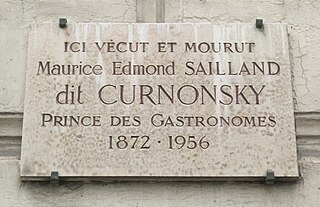
Maurice Edmond Sailland, better known by his pen-name Curnonsky, and dubbed the Prince of Gastronomy, was one of the most celebrated writers on gastronomy in France in the 20th century. He wrote or ghost-wrote many books in diverse genres and many newspaper columns. He is often considered the inventor of gastronomic motor-tourism as popularized by Michelin, though he himself could not drive. He was a student of Henri-Paul Pellaprat.

Marcel Rouff was a Swiss novelist, playwright, poet, journalist, historian, and gastronomic writer. With Curnonsky he wrote the multi-volume work La France gastronomique, guide des merveilles culinaires et des bonnes auberges françaises. He may be best known today for his novel about the fictional gourmet Dodin-Bouffant, La vie et la passion de Dodin-Bouffant, Gourmet, which was first published in 1924 and dedicated to his friend Curnonsky and the great nineteenth-century French gastronome Jean-Anthelme Brillat-Savarin. Rouff's novel was adapted for French television in 1973 by Jean Ferniot and in a 2023 feature-length movie by Trần Anh Hùng, The Taste of Things.

A floating island or île flottante is a dessert consisting of meringue floating on crème anglaise. The meringue used is baked in a bain-marie. It may be served at room temperature or chilled.

Whipped cream, also known as Chantilly cream or crème Chantilly, is high-fat dairy cream that has been aerated by whisking until it becomes light, fluffy, and capable of holding its shape. This process incorporates air into the cream, creating a semi-solid colloid. It is commonly sweetened with white sugar and sometimes flavored with vanilla. Whipped cream is often served on desserts and hot beverages, and used as an ingredient in desserts.
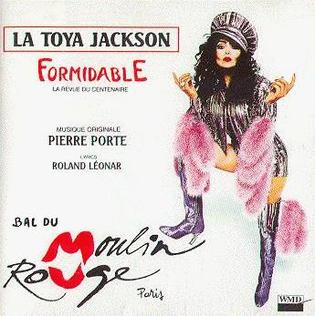
Formidable is the soundtrack to the show performed at the Moulin Rouge in Paris, France by American singer La Toya Jackson. Only 3,000 copies were created and it has become one of the most sought-after albums by her fans.

Thierry Jarnet is a champion thoroughbred flat racing jockey in France who won the title four times between 1992–1995. Jarnet was first apprenticed to Patrick Rago at Maisons-Laffitte and then to Yann Porzier at Chantilly, Oise.

Marthe Chenal was a French operatic soprano who had an active singing career between 1905 and 1923. Although she made a number of appearances with opera companies throughout the French provinces and on the international stage, her career was mainly centered at the Palais Garnier and the Opéra-Comique in Paris. She particularly excelled in the works of Jules Massenet and was an exponent of the works of Camille Erlanger.

Opera cake is a French cake. It is made with layers of almond sponge cake soaked in coffee syrup, layered with ganache and coffee French buttercream, and covered in a chocolate glaze. Its name originates from its layers resembling the levels of an opera house.

Pierre Albéric Second, was a 19th-century French journalist, novelist and playwright.
Aboukir is type of a dessert make with a sponge cake that has been baked in a Charlotte mold, divided into multiple layers which are layered with chestnut cream. The assembled dessert is iced with coffee-flavoured fondant and decorated with a garnish of chopped pistachios. According to Larousse Gastronomique the dessert is of French origins. A frozen variation with pistachio ice cream is called an Aboukirbombe.

















